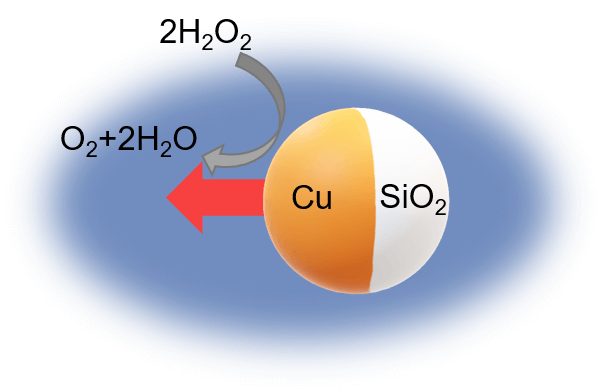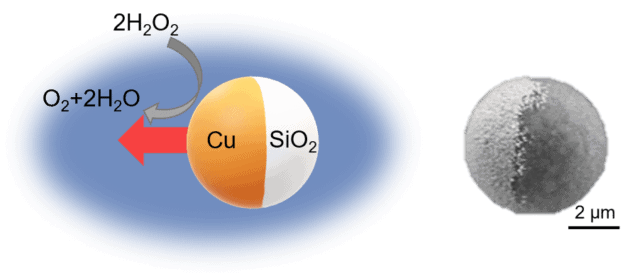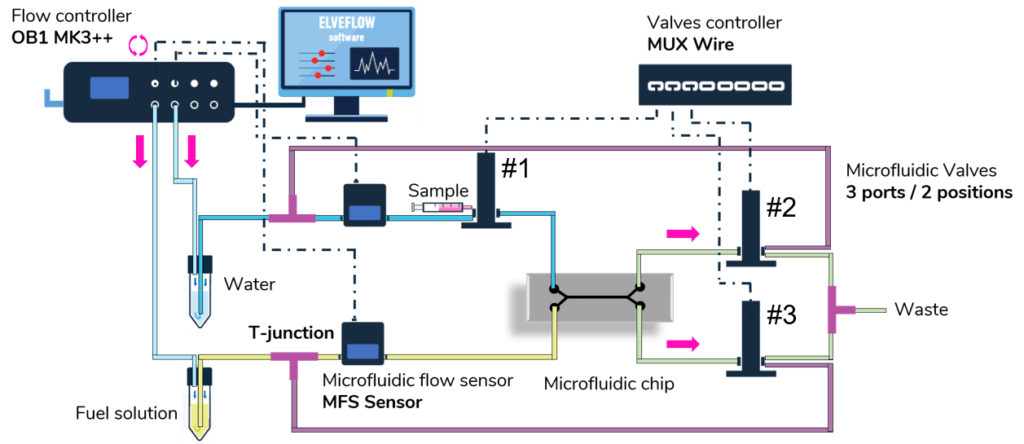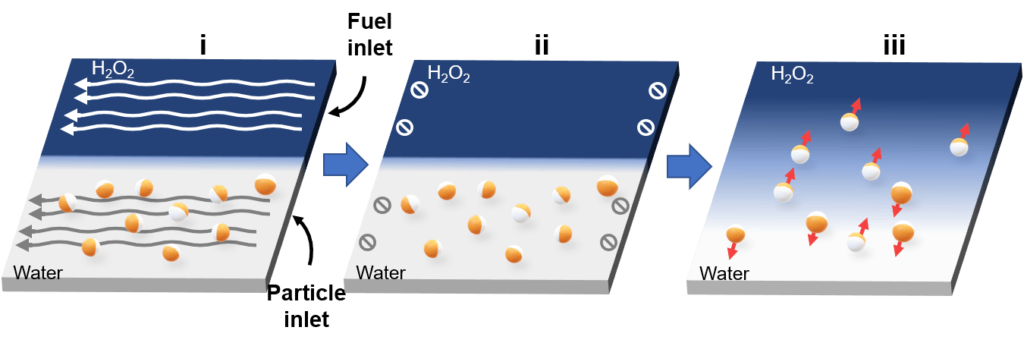Microswimmers chemotaxis behavior in a stop flow gradient generation platform
Published on 13 April 2022
This review of microswimmer chemotaxis is based on the article published in Angewandte Chemie International Edition by Zuyao Xiao, Audrey Nsamela, Benjamin Garlan, and Juliane Simmchen.
One of the authors, Audrey Nsamela, was a PhD candidate in the Active Matter project, which has received funding from the European Union’s Horizon 2020 research and innovation program under the Marie Sklodowska-Curie grant agreement No 812780.

Abstract
The ability of artificial microswimmers to respond to external stimuli and the mechanistic details of their origins belong to the most disputed challenges in interdisciplinary science. Creating chemical gradients is technically challenging because they quickly level out due to diffusion.
Inspired by pivotal stopped-flow experiments in chemical kinetics, we show that microfluidics gradient generation combined with a pressure feedback loop for precisely controlling the stop of the flows can enable us to study mechanistic details of chemotaxis of artificial Janus micromotors based on a catalytic reaction.
We find that these copper Janus particles display a chemotactic motion along the concentration gradient in both positive and negative directions, and we demonstrate the mechanical response of the particles to unbalanced drag forces, explaining this behavior.
Aim – Understanding living systems at the microscale
Taking a closer look at the natural survival skills of most living creatures on earth, from bacteria to humans, one of the typical traits is migration to search for food.
However, suppose it is now reasonably easy to understand the mechanisms that drive your neighbor Charlie to go to the supermarket and buy supplies for a lovely dinner. In that case, it is a whole other story when it comes to studying self-propelling microorganisms’ ways of finding nutrients.
At this scale, and especially in non-equilibrium physical phenomena, many things differ from the macro world; mass and heat transfer are enhanced, viscous forces are dominant over inertial forces, that is, by definition, a low Reynolds number regime, thermal fluctuations become nonnegligible. Understanding the behavior of such microsystems requires a multidisciplinary approach, with biology, physics, and chemistry being closely interlinked.
This study focuses on the physical response of artificial microswimmers to a fuel concentration gradient. The microswimmers are silica microparticles half-coated with a thin copper layer [1]. When in contact with hydrogen peroxide, the copper side degrades the fuel to form oxygen and water, and this chemical reaction initiates the motion of the particles.

How does microfluidics come into play for microswimmers study?
Microfluidics has mainly been used to fabricate artificial or biohybrid microswimmers, but recently, its potential for micro-environment design has also been explored [2].
This paper aimed to perform a chemotaxis assay in a well-defined hydrogen peroxide gradient without any external flows. Performing a net zero flow in microfluidics is not trivial, especially when such light microparticles sense the slightest flow (well below the detection limit of standard flow sensors).
For this purpose, a platform with a pressure-driven flow controller has been developed to combine gradient generation with stop-flow actuation. A set of microfluidic valves enables sample injection into the microfluidic chip and a retroactive pressure loop to ensure no pressure difference across the setup during stop flow.
A short sequence was created on the ESI (Elveflow) for automated gradient creation and stop flow. Videos of the particles were recorded in the first 30 seconds of stop flow.


Key findings on microswimmers chemotaxis
The microfluidic chip achieved a stable flow-based gradient as the active particles flowed in the water stream. Once the flow was stopped, the particles were able to move freely in the microfluidic chip. We found that:
- There was a clear trend for the particles to swim downwards or upwards the fuel gradient, as compared to the control experiment (no gradient).
- This tendency is depending on the fuel initial concentration, with barely any change when the concentration is below 0.1% of H2O2.
- This phenomenon is explained by a change in drag force experienced by particles with orientation askew to the gradient, pushing them to reorient themselves towards the more concentrated region.
- By symmetry, this mechanical orientational change will not affect particles with original orientation downward the gradient.
Next steps include testing this platform with other types of microswimmers and fuels, to gain more insight into the physics behind chemotaxis [3].

Review done thanks to the support of the ActiveMatter
H2020-MSCA-ITN-2018-Action “Innovative Training Networks”, Grant agreement number: 812780
Author: Audrey Nsamela, PhD
Contact:
Review done thanks to the support of the ActiveMatter
H2020-MSCA-ITN-2018-Action “Innovative Training Networks”, Grant agreement number: 812780
Author: Audrey Nsamela, PhD
Contact:



References
- P. Sharan, Z. Xiao, V. Mancuso, W. E. Uspal, and J. Simmchen, “Upstream rheotaxis of catalytic Janus spheres,” 2021
- P. Sharan, A. Nsamela, S. C. Lesher‐Pérez, and J. Simmchen, “Microfluidics for Microswimmers: Engineering Novel Swimmers and Constructing Swimming Lanes on the Microscale, a Tutorial Review,” Small, vol. 17, no. 26, p. 2007403, Jul. 2021
- M. N. Popescu, W. E. Uspal, C. Bechinger, and P. Fischer, “Chemotaxis of Active Janus Nanoparticles,” Nano Lett., vol. 18, no. 9, pp. 5345–5349, 2018